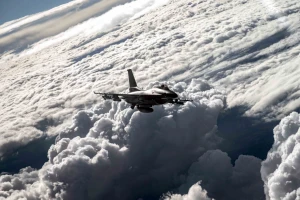
Ukraine marks Day of Special Operations Forces: some facts about them and resistance movement
On July 29, Ukraine celebrates the Day of the Special Operations Forces of the Armed Forces of Ukraine, which, in particular, are engaged in organizing the resistance movement in the temporarily occupied territories
This was reported by Espreso TV.
The Special Operations Forces (SOF) are a separate branch of the Armed Forces of Ukraine, which includes special forces and information and psychological special operations units. They are staffed by specially trained professionals with special capabilities in the areas of intelligence, direct action and military support to carry out complex, dangerous and sometimes politically sensitive operations.
One of the most important and difficult tasks of Ukraine’s SOF is to organize the resistance movement in the temporarily occupied territories. Its organization is a complex system, but at the same time, it is very efficient and effective. The resistance movement consists of:
- partisan forces;
- the underground;
- auxiliary forces specializing in, but not limited to, non-violent resistance.
According to the decision of the Commander-in-Chief of the Armed Forces of Ukraine, "other forces and means of the security and defense forces may be involved in the execution of the tasks of the resistance movement in coordination with the heads of the command and control bodies of the relevant security and defense forces."
The resistance movement in the occupied territories of Ukraine has already gained international attention, with articles devoted to it by reputable foreign media. For example, The Economist named Melitopol the unofficial capital of the Ukrainian resistance in the occupied territories. But this is not the only place where special operations were conducted.
For example, the Russian-controlled Chornobaivka air base in Kherson region was blown up almost two dozen times. In Enerhodar, the collaborator Andriy Shevchyk, the mayor appointed by the occupiers, was the target of an assassination attempt. In Izium, according to the intercepted conversation of a Russian soldier, a friendly-looking elderly woman treated the invaders to poison pies, which led to the death of eight of them. The traitorous Deputy Oleksiy Kovalev was also killed, a hotel in Melitopol, where the command of the Russian occupiers lived, was blown up, as well as the headquarters where the referendum was being prepared and in Berdiansk.
In April 2022, a public resistance movement called the Yellow Ribbon emerged in the temporarily occupied territories of Ukraine. On April 27, a peaceful action "Kherson is Ukraine" was held in Kherson. About 500 people took to the streets of the city, four of whom were injured by the occupiers. According to the organizers, the rally was the impetus for the development of the movement. Subsequently, yellow ribbons began to appear in Oleshky, Melitopol, Nova Kakhovka, Berdiansk, Yalta, Simferopol, Kerch, Saki, Donetsk, Luhansk, Henichesk, Alushta, and other cities and villages. In mid-January 2023 alone, nearly 1,000 activists from the temporarily occupied Crimea joined the movement, posting pro-Ukrainian leaflets, drawing graffiti, and hanging yellow ribbons.
According to analysts at the Institute for the Study of War, the Russian occupation forces have failed to neutralize Ukraine's organized partisan movement and are unlikely to do so in the future. Effective partisan attacks, they argue, force the Kremlin to divert resources from frontline operations to protect its military in the rear areas, and impair Russia's ability to defend itself against ongoing Ukrainian counteroffensives, let alone conduct its own offensive operations.
- On July 11, the first woman in Ukraine completed a special Special Operations Forces Q-course and received a SOF patch.
- News











































